Forms for the installations in Kunda at Hiiemägi and Lammasmägi.
Suurlaid Island clay and Kunda clay.
There are two sculptures that will be carried with me to Kunda to install. One on the ridge at Hiiemägi and one on the past island of Lammasmägi.
The ideas for these two sculptures came through making in the studio. They moved around a bit until I landed on the settled place and form for each.

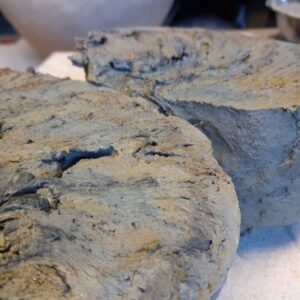
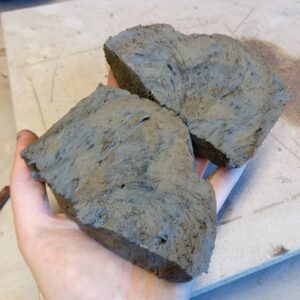
Above is the island clay in its raw state. Mixed with all sorts of different pigments. With its grit sand and grass left in. Even while making the forms below stripes of differently coloured clay could be seen in the box and pinched pot. Wild clays are so alive while being worked with.
Making.
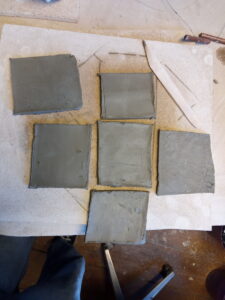
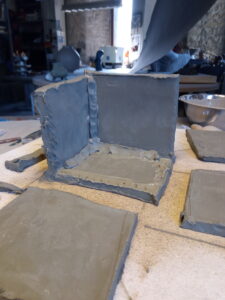

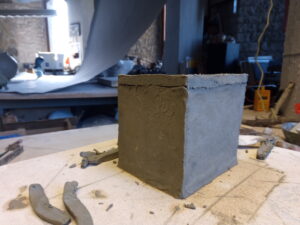
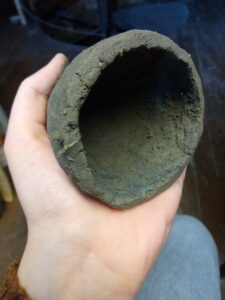
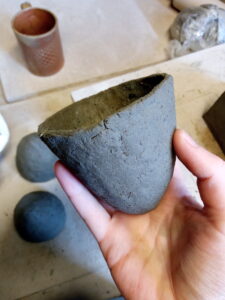
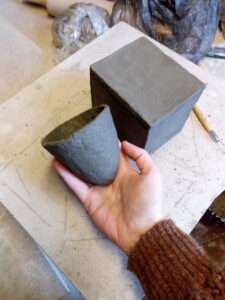
The island clay is quite crumbly. I knew I wanted to take unfired pieces to Kunda this time. There is something about the dissolving of the work, seeing as they would both be left on land this time rather than in the river, that felt right.
The first sculpture for Hiiemägi hill is a small pinched and coiled pointed bottom pot made solely of the Suurlaid island clay, that would be slightly burnished and carried in a protective saggar of island clay mixed with the stronger white stoneware. The small pot being made only of the island clay with all of it’s impurities was weak and delicate. Its shape comes from the shapes of the Prehistoric Pitted and Combed Ware. These pointed bottom pots are a form that has been stuck in my mind since arriving in Estonia and doing the initial research into the pottery cultures here in prehistory.
A drawing of Baltic Neolithic Ware from the article – The Neolithic of the Eastern Baltic, Rimutė Rimantienė, Journal of World Prehistory, Vol. 6, No. 1 (March 1992), pp. 97-143 (47 pages) https://www.jstor.org/stable/25800611

A recent pencil drawing of these forms.
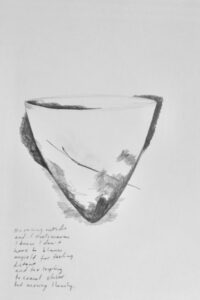
A drawing done in September 2020 of these forms and initial thoughts on sculpture practice.
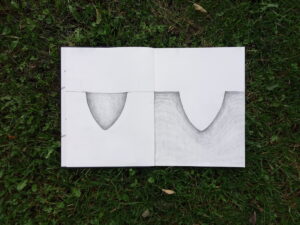
Below is the protective saggar face down with the lid next to it, and the smaller delicate pot in the background is the one that will be held inside. The saggar clay has been kneaded with white stoneware in order to give the casing strength and stability.
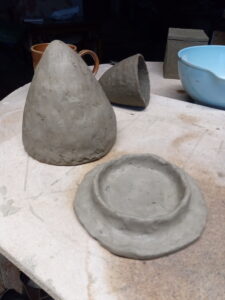
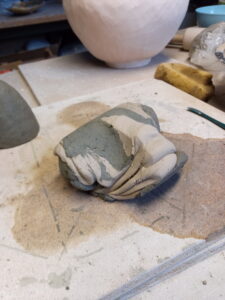
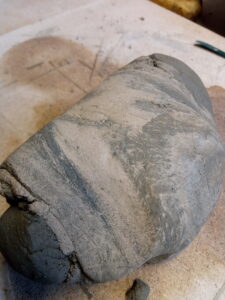
Saggars are boxes that delicate ware is fired inside in the kiln. Saggars are refired repeatedly in the kiln to protect each load, being reused in every firing. This gives them a beautiful materiality, withstanding the flames and heat, and picking up the traces and marks each time. They are often stacked upon one another. A kiln being full of towering stacks of saggars, and within each collections of the finest ceramics.
The delicate inner pot would be taken to Hiiemägi and left there, on the burial grounds of many past ancestors. The saggar will be carried back with me to Tallinn, going on the journey to and from Kunda, returning empty, to be possibly fired. One vitrified and kept, that is the carrier and the other left to break down in the rain.
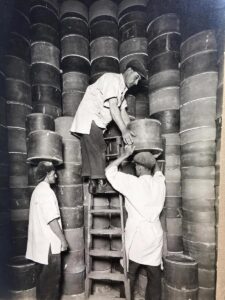
(https://www.thesun.co.uk/uncategorized/3355784/3355784/)
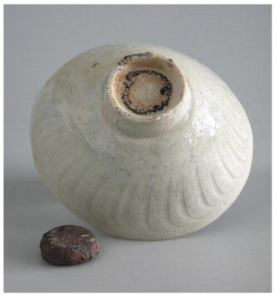
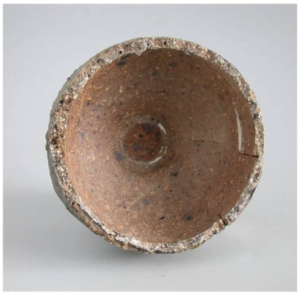
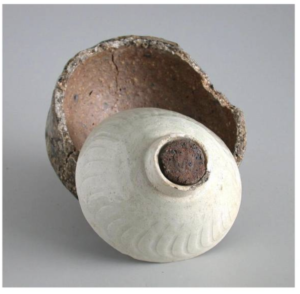
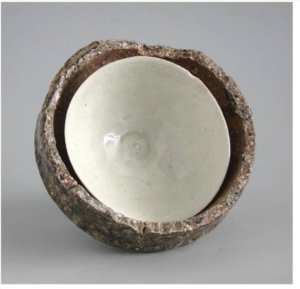

(https://gotheborg.com/glossary/saggar.shtml)
The second sculpture to be installed at Lammasmägi would be a lidded box made of Kunda clay with a small bump on the bottom inner face of the box, this small bump is made of the Suurlaid clay. So there is a small bump just like the mound of Lammasmägi that sits in the flatlands of Kunda, it’s form revealing that it used to be an island in the large ancient lake that covered much of present day Kunda. The box that holds the island will be buried in the past island of Lammasmägi, its container made of Kunda clay, to be left to dissolve in the Kunda earth. A burial of an offering to the past island, made from the earth of Estonia.

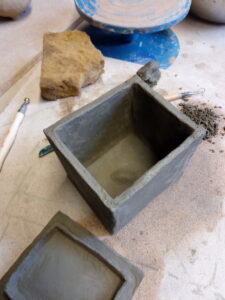
The Suurlaid island clay in both installations has experienced a migration. From off the South-Westerly coast of Estonia up to the North Eastern coast of Kunda. It has been dug, carried, and put on a rowing boat by a friend, to be brought to a larger island, then in a car, on a ferry, and up to Tallinn, to then be left in Kunda.

